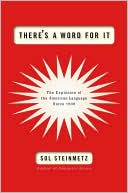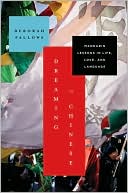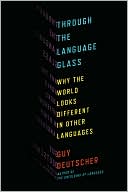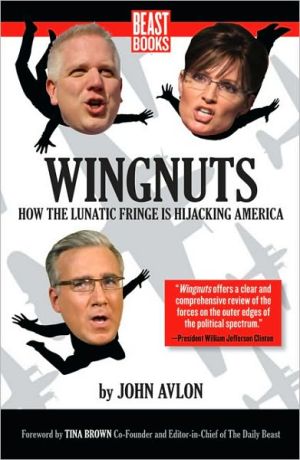There's a Word for It: The Explosion of the American Language Since 1900
Search in google:
Word geeks (1984), rejoice! Crack open these covers and immerse yourself in a mind-expanding (1963) compendium of the new words (or new meanings of words) that have sprung from American life to ignite the most vital, inventive, fruitful, and A-OK (1961) lexicographical Big Bang (1950) since the first no-brow (1922) Neanderthal grunted meaningfully.From the turn of the twentieth century to today, our language has grown from around 90,000 new words to some 500,000—at least, that’s today’s best guesstimate (1936). What accounts for this quantum leap (1924)? In There’s a Word for It, language expert Sol Steinmetz takes us on a supercalifragilisticexpialidocious (1949) joyride (1908) through our nation’s cultural history, as seen through the neato (1951) words and terms we’ve invented to describe it all. From the quaintly genteel days of the 1900s (when we first heard words such as nickelodeon, escalator, and, believe it or not, Ms.) through the Roaring Twenties (the time of flappers, jalopies, and bootleg booze) to the postwar ’50s (the years of rock ’n’ roll, beatniks, and blast-offs) and into the new millennium (with its blogs, Google, and Obamamania), this feast for word lovers is a boffo (1934) celebration of linguistic esoterica (1929).In chapters organized by decade, each with a lively and informative narrative of the life and language of the time, along with year-by-year lists of words that were making their first appearance, There’s a Word for It reveals how the American culture contributed to the evolution and expansion of the English language and vice versa. Clearly, it’s must-reading (1940). And not to disparage any of the umpteen (1918) other language books on the shelf—though they have their share of hokum (1917) and gobbledygook (1944)—but this one truly is the bee’s knees and the cat’s pajamas (1920s). Library Journal Decade-by-decade snapshots from prolific lexicographer Steinmetz explain amazing American English-language vocabulary growth since 1900. Words with staying power are emphasized, not those that eventually faded, which Rosemarie Ostler presented in another decade book, Dewdroppers, Waldos and Slackers (Oxford Univ., 2003). The Oxford English Dictionary and newspaper quotes are dominant tools. In most chapters Steinmetz provides a general historical synopsis, followed by definitions of select words, and then a year-by-year listing of new terms. The insights would be more prominent, however, if the chronological structure were topical instead, as in Paul Dickson's 2006 Slang! The Topical Dictionary of Americanisms (3d ed.). For example, the 1901 word exurban is connected with the words exurbia and exurbs, coined in the 1950s, in the definition of exurban, not with the later words. Also, more talk about Generation X is in the 1950s chapter, which reflects postwar uncertainty, than in the 1980s and 1990s chapters, when the group on whom the name settled came of age. VERDICT Reliable, thorough, and amusing, this is recommended for general readers, despite some limitations.—Marianne Orme, Wheaton, IL








